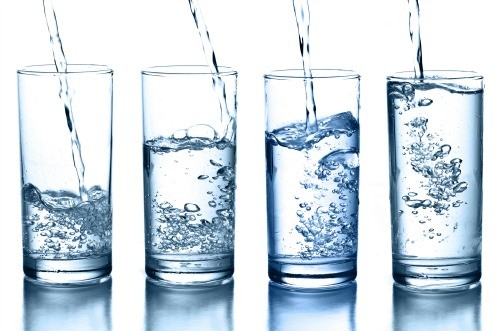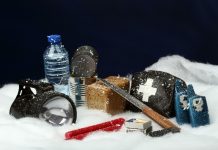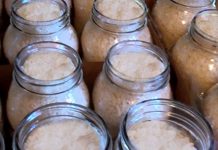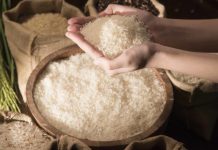You probably already know that water is essential to your survival and a huge problem if you’re stuck without. In fact, just 3 days without can be fatal.
Imagine you’re stranded outdoors with no water, desperate to stay alive.
What would you do? How would you get water?
Today I’m going to show you the ins and outs of finding water for survival.
You’ll learn:
- Where To Look For Water
- How To Know If Water Is Safe To Drink?
- How To Extract Clean Drinking Water (In the Desert, In the Forest, In the Ice).
- Methods Of Purifying Water
Finding water has been an age-old undertaking of mankind.
Living in the third world, it still is a struggle every day to access clean water even when it is available.
Statistics show 1 in 10 people living with no access to safe water worldwide.
Source: World Health Organization
The body needs 2 quarts of water daily to survive (just to drink). But, remember this is survival.
If your supply of water is limited make sure you:
- Rest! Physical movements must be limited.
- Do not over-exert yourself. Exposure to the elements must also be avoided. Keep out of the sun.
- Do not drink your own urine!!!!
- Wear clothing appropriate to the climate
- Talking is kept to a minimum
- Breath through the nose and not the mouth
- Do not smoke or have big meals.
- Absolutely do not drink alcohol
These lessons can be transferred to survival situations and can increase the chances of survival by over 80%.
And of course, it goes without saying, it’s always better to be prepared. Ensure your bug out bag is well equipped. Having access to water filters, a GPS, and containers to capture and store water will always increase your chances of survival.
Where To Look For Water
Where To Look For Water In Arid and Desert areas
Desert foliage and animals can indicate the presence of water
One major advantage of the Desert is visibility as there are no obstructions on the landscape. Unless there is a sandstorm, one can see the comings and goings of any form of life clearly. It is, therefore, possible to spot some telltale signs that can lead you to a water body.
Animal life:
Most people in a survival situation tend to keep away from animals. There is wisdom in this but animals can turn out to be a lifeline. Predators almost always have a watering hole in the vicinity of their territory and prey is always looking for a watering hole. Look out for a place where animals congregate and the animal population is widespread or a general direction which shows a considerable amount of animal traffic.
Bird and insect populations:
Mosquitoes abound where there is stagnant water, bees cannot live more than 1000 meters away from a water source and ants have a keen sense of smell which sniffs out water near their settlements. With any of these insects around you, it is a sure sign that there is a water body nearby.
Plant life:
A clump of vegetation in the middle of an arid area or near a rock formation can indicate water underneath the ground surface or within the rock veins. The greener and leafier it is the more water there is.
Where To Look For Water In Forests
Forests can offer more options to find water
Even though there may be abundant water in a forest setting finding safe water may pose a greater challenge. However, chances of finding clean water are greater when you look out for
Animal life:
Grazing animals are never far from water sources in a forest and are a sure sign that clean safe water is nearby. Unlike the Desert where the animals only trek to and from the water source when they need water, in the jungle animals are ever present near a water body.
Roots and tubers
Jungles have a lot of tubers and roots that are filled with water. These come in handy when foraging for clean and safe water to drink. It is best to find larger, thicker ones that have enough water instead of looking for smaller ones. That way you can minimize your movements, exerting yourself less.
Bird and insects:
Flies tend to stay within 100 meters of water. Look out for the iridescent green colored European mason fly because they are always to be found near water bodies. Pigeons are also lovers of water and a good indicator that water is nearby.
Where To Look For Water In Icy Terrain
Bare ice landscape can have limited options
The ice found on Earth is softer and less cold than that found on other planets in our solar system. Our ice is made of numerous grains packed together with a thin film of water running through them and this water can support life. It must however not be fresh sea ice.
Fresh sea ice is saltier because of the concentrated salt droplets are known as brine. This makes it’s undrinkable. Multi-layer ice otherwise known as old sea ice, on the other hand, has lost it’s brine and is safer to drink as it produces potable fresh water. The two can be easily distinguished apart as the old ice has a blue tinge while the new one does not.
You can find portable sea ice from icebergs, river ice, and multi-layer ice. However; eating ice and snow is not recommended as it will lower your temperature which is not ideal when you are in survival mode.
How To Know If Water Is Safe To Drink?
The discovery of water can be invigorating but you must refrain from being led by your thirst. You must inspect the water to ensure it is safe to drink before drinking it otherwise you may ingest harmful bacteria and other organisms.
- It should not be green in color
- It should not have an odor
- No carcasses in it
- It must be coming from a source like an underground spring
How To Extract Clean Drinking Water
Even in cases where you find a fountain of clean water or a puddle that is seemingly uncontaminated when in a survival situation it is best to err on the side of caution. You can do this by employing safe water extraction methods. Although, each terrain has its own challenges some methods cut across all the survival scenarios. Let us look at each landscape and the specific methods that work for each.
Extracting Water In the Desert
Condensation:
As you are looking for water in the Desert you will probably come across several dried river beds. These dried up beds of water are actually the best places to find moisture amid the aridity. Through condensation; you can harness a good quantity of clean, safe water from them.
The process
- Begin by digging curved holes into the bed. The holes should be over 40 cm (16 in) in order to reach the subsoil that has the water. Make sure the holes are directly in the sun.
- Put green leafy plants into the hole and your container in the center. The green plants also transpire adding to the water collected.
- Spread a taut plastic paper (or raincoat) over the container without covering it. To ensure no gaps are left unsealed use sand to hold the plastic cover in place on the edges. Any holes or gaps mean no water will be collected.
- As the water evaporates out of the moist soil and the green plants transpire within the soil, the water produced will condense on the plastic cover and drip into the container.
How effective is this method?
You can survive off this water for as long as you harness the water trapped underneath the river bed. It is clean and safe water although you will need multiple setups to harness an adequate amount of water. This process is also effective in a dune valley where rainwater collects and seeps into the ground.
Extracting water from plants, roots, and tubers
In the Desert, one of the most popular plants that store water is the cacti. This prolific plant can hold up to 2000 gallons of water as in the case of the Sahuaro cactus. Although the water is acidic because of the photosynthesis process in the Desert, it can be made drinkable when one boils it. Boiling destroys the malic acid found in some succulent plants like cactus.
The process:
- Chooses a thick and turgid limb or part of the stem.
- Nick the chosen part with a knife and allow the water to drain into a container.
- In case the cacti are low on water cut of a limb and wring the water out. This may be difficult to do because of the prickly nature of the cacti exterior.
How effective is the method?
Cacti are able to store water for prolonged periods of time. The water is safe as with water extracted from the plant as long as it is adequately heated to make it drinkable. In fact, with the cacti, you will have a constant supply of water but you must be careful not to cut it too deep and leave it “bleeding”. It can be like a leaky faucet.
Extracting Water In the Forest
Transpiration
Transpiration on a leaf
This method requires a plastic bag for collecting the water as it runs off the plant leaves. However, since you may not have a plastic bag or raincoat or any other bag would do just fine.
The process:
- Choose a green large-leafed plant or berry bushes that receive plenty of sunlight. This is because the heat from the sun facilitates more transpiration.
- Pick a branch with numerous leaves and place the plastic bag or raincoat over it. Secure either of them very tightly onto the branch to prevent the moisture from escaping.
- With the covering hanging off the branch the water collected onto the leaves will drain into it providing you with fresh, clean drinking water.
How effective is the method?
Within 4 hours you may have harnessed 1/3 of a cup. However, in order to reap the most benefits from this method, you may need to have plastic bags or other coverings over several plants simultaneously.
Water extracted from barks, stems, roots, and shoots
Stems, barks, roots, and shoots from vines and other plants can store water within them. However, with the exception of the bark, the rest should be at least 5cm thick to have enough water.
The process:
- Select a vine with limbs measuring at least 5 cm in thickness.
- Make an incision to see the color of sap that the plant produces. Milky white sap indicates the plant is poisonous while clear fluid means it is safe to drink from.
- Place your container and collect the fluid for drinking or you can suck the water directly with your mouth.
How effective is the method?
This method can produce enough water to last you an entire day. Almost all water extracted from plants is safe to drink with the exception of water from poisonous plants. Because the water is contained within the plant it has no contact with contaminants.
Extracting Water In the Ice
Old ice like ice-bergs and multi-layered ice are sources of water in cold wildernesses because they have lost most of their brine and are able to produce fresh drinking water.
Desalination:
Blue-tinged ice
Drinking salty water will quickly dehydrate you and leads to death. However, not all ice is useless. Find old ice that has a blue tinge to it and through the process of distillation, you can produce fresh water for drinking.
The process:
- Find two metallic containers of varying sizes: one large and the other smaller
- Put salt water into the larger one and drop the smaller container into it ensuring it does not float.
- Cover both with a lid that sits well onto the larger container but has a low point that drops directly into the top of the smaller container.
- Begin to gently heat the salt water in the large container so that it can form steam on the lid. Make sure the heat is not too much to boil the water and splash it onto the lid.
- As the steam forms on the lid, it will run down into the smaller container as fresh water that is drinkable.
How effective is the method?
This is a tried and tested method that produces clean drinking water time and time again. The water that is found within the ice is sufficient to form dense droplets of condensation when heated. Once the items needed are in place it is a highly effective method of extracting water from ice.
Methods Of Purifying Water
When you find yourself working with very limited options of water you can still get water from these sources and purify it for consumption. The key to producing pure water lies in having prior knowledge of the processes and materials you would need.
Water Treatment
It is imperative to treat water that has been found from any source. While you cannot be expected to treat water using modern technology in the wilderness, you can find barks and seeds that can treat water and make it safe to drink. Experimental trials have revealed bark of horseradish or Ben oil tree (Moringa Oleifera), the Barbados nut (Jatropha curcas), and the Guar or cluster bean (Cyamopsis tetragonoloba) can treat water.
Water Filtration
It can be hard to distinguish lethal bacteria in water just by looking at it. The pine tree has been proven in studies to trap bacteria found in water when water is filtered through sticks derived from the tree. According to a team of MIT scientists, this filtration method can produce up to 4 liters of fresh, uncontaminated water daily. The small-sized pores in the sapwood can prevent over 99% of the bacteria E. coli from passing through.
Boiling
Heat is a great way to kill bacteria and other microorganisms in water. You must, however, ensure the water boils properly and is not just heated up.
Conclusion
I hope you enjoyed our guide to finding water in a survival situation.
Understanding the need for basic survival skills is the beginning of preparing yourself for a survival situation.
Our point? Survival skills are not complicated but being informed and prepared is essential.





















